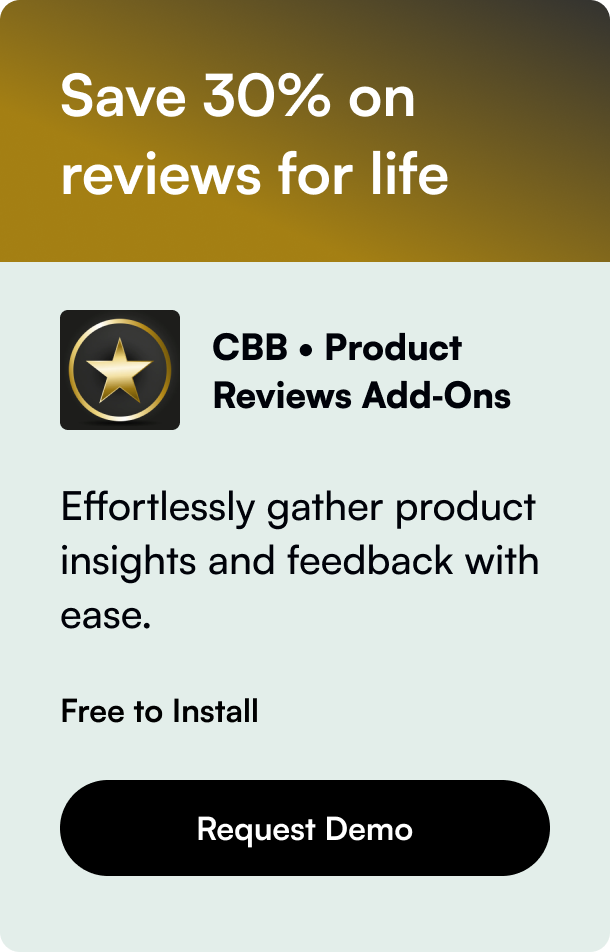Table of Contents
- Introduction
- What Are 301 Redirects and Why Do They Matter?
- How to Implement 301 Redirects on Shopify
- Best Practices for Managing 301 Redirects
- Conclusion
- FAQ
Introduction
Imagine you've recently revamped your Shopify store. Your products are updated, the design is sleeker, and your site structure is more intuitive. However, there's a snag: you've realized that the URL changes may disrupt your customer's experience and negatively impact your SEO rankings. This is where the power of 301 redirects comes into play, a critical tool for any Shopify store owner embarking on site updates or migrations.
In this blog post, we'll delve deep into the realm of 301 redirects on Shopify—why they're essential, how to implement them, and best practices to follow. By the end, you'll have a thorough understanding of how to navigate redirects smoothly, ensuring both your visitors and search engines can easily find your updated content, thereby preserving your SEO efforts and enhancing user experience.
What Are 301 Redirects and Why Do They Matter?
A 301 redirect, tagged as the "Moved Permanently" HTTP status code, is a method used to send users and search engines from one URL to another automatically. These redirects play a pivotal role in maintaining a website's domain authority and search rankings when URLs are changed or deleted. They're indispensable for e-commerce platforms like Shopify, where product updates or migrations could leave a trail of broken links without proper management.
Importance of 301 Redirects
- Preserve SEO Rankings: Redirects help transfer the SEO value from the old URL to the new one, ensuring your hard-earned search engine ranking isn't lost.
- Enhance User Experience: They prevent customers from landing on 404 error pages, directing them to the content they're looking for or an alternative, thereby reducing bounce rates.
- Maintain Backlink Value: Backlinks are a crucial SEO asset. 301 redirects help in retaining the value of backlinks pointing to your site by redirecting them to relevant pages.
How to Implement 301 Redirects on Shopify
Setting up 301 redirects on Shopify is straightforward, thanks to its user-friendly backend. Here's a step-by-step guide to get you started:
Creating Individual 301 Redirects
- From your Shopify admin dashboard, navigate to
Settings > Online Store > Navigation. - Click
View URL Redirects. - Hit the
Create URL Redirectbutton. - In the
Redirect fromfield, input the old URL you wish to redirect from. - In the
Redirect tofield, enter the new URL you're directing traffic to. - Click
Save redirect.
Note: Shopify does not allow redirects from URLs that begin with certain prefixes like /apps, or /cart. Ensure the URLs you plan to redirect do not start with these.
Handling Bulk 301 Redirects
For store owners dealing with numerous redirects, Shopify offers a bulk upload feature:
- Prepare a CSV file with two columns:
Redirect fromandRedirect to. - In the URL redirects section, click on the
Importbutton and upload your CSV file.
This feature is particularly useful for migrating stores or implementing site-wide URL changes.
Best Practices for Managing 301 Redirects
Managing 301 redirects effectively is key to avoiding SEO pitfalls and ensuring a seamless user experience. Here are some best practices to follow:
- Audit Your URLs Regularly: Keep track of URL changes and regularly audit your site to identify broken links or pages that require redirection.
- Use Redirects Sparingly: While redirects are helpful, excessive use can slow down your site. Aim to use direct links whenever possible.
- Monitor SEO Performance: After implementing redirects, monitor your site's SEO performance to ensure no unexpected drops in rankings occur.
- Update Internal Links: Besides setting up redirects, update internal links throughout your site to point directly to the new URLs.
Conclusion
Navigating the world of 301 redirects on Shopify might seem daunting at first, but with the right approach, it can significantly benefit your online store. By effectively implementing and managing redirects, you maintain your SEO authority, enhance site navigation, and provide your customers with an uninterrupted shopping experience.
Remember, the goal is to keep both search engines and users happy—a feat achievable with well-executed 301 redirects. Implement these changes thoughtfully, and your Shopify store will continue to thrive in the ever-evolving digital landscape.
FAQ
Can I undo a 301 redirect on Shopify?
Yes, you can delete a 301 redirect from the URL redirects section in your Shopify admin to undo it. However, consider the potential SEO implications before doing so.
How long should I keep a 301 redirect?
It's recommended to keep a 301 redirect indefinitely. Search engines may continue to index the old URL for a considerable time, and users may have bookmarked it.
Will setting up 301 redirects affect my site's speed?
While 301 redirects can slightly impact site speed, particularly if overused, their benefits in preserving SEO and user experience generally outweigh these concerns.
How do I know if a 301 redirect is working?
After setting up a redirect, test it by attempting to visit the old URL. If successfully redirected to the new URL, your 301 redirect is working as intended.
Built to inform, thanks to programmatic SEO.








